By Fran Wilson, Patrick Andrus and Laura Hudock on behalf of the Notables Committee For 27 years dedicated members of the Children’s Literature Assembly have served on the seven-member committee tasked with selecting 30 Notable Children’s Books in the Language Arts (NCBLA). While enthusiastic summaries of each title on the annual NCBLA list have been a highlight for readers of the Journal of Children’s Literature and Language Arts as well as for session attendees at the annual National Council of Teachers of English conference and Tucson Festival of Books, in coming months the instructional possibilities of selected NCBLA titles will now regularly feature on this blog. To launch this resource alongside the announcement of the 2024 NCBLA list, three current members Fran Wilson, a second-grade teacher in Madeira, Ohio and the 2024 NCBLA Chair, Patrick Andrus, a fourth-grade teacher in Eden Prairie, Minnesota and the 2025 NCBLA Chair, and Laura Hudock, an assistant professor of literacy and children’s literature at Framingham State University wish to pull back the so-called curtain to shed light on the selection process. All titles on the annual NCBLA list are works of fiction, nonfiction, and poetry penned for children in grades K-8 and published in the previous calendar year. These selected children’s books have to exemplify additional criteria, including
The exemplary children’s books named to each NCBLA list are high-quality texts that promote language arts and offer a range of literacy-related instructional possibilities. For example,
As we narrow down 768 prospective titles to a list of 30, the two *asterisked criteria often serve as our guiding light for envisioning instructional possibilities. Though we may anticipate a particular title’s positive reception to an audience of K-8 readers, we need to be certain that our assessments align with the responses of actual children. So, committee members often read aloud to their young children, grandchildren, K-8 students, and under/graduates enrolled in children’s literature and literacy courses. Patrick and Fran will highlight two ways we informally tested the asterisked criteria for titles published in 2023 and considered for the 2024 NCBLA list. Patrick’s Polling Insights During scheduled Zoom meetings each committee member nominates titles read to date as potential final selections based on NCBLA criteria, but we often wonder about how the intended audience of K-8 readers would receive these books. To help prioritize the target audience in committee discussions and voting, I (Patrick) have had the opportunity to share these nominated titles with my fourth-grade class. Throughout the past voting year, I tested out various picturebooks with this real-life "studio audience" to obtain a sampling of up to twenty-five elementary-aged readers’ honest, authentic opinions. I share one picture book each school day as part of my daily teaching routine. My fourth-graders become excited when they know I'm testing a picture book - they’re eager to contribute to the selection process and take this role seriously. My students offer their candid observations, inquiries, and themes related to these books. Many times after I finish one of the book selections, a student will shout out, “Now that is a five-star book!” or predict, “That one is going to be the winner this week.” At the end of the week, I collect their votes for the favorite picturebook of the week. Of note, some titles have been redacted. Of those deemed potential final selections for the NCBLA list by our committee, some fell flat with my students when real aloud while others delivered positive responses. Sometimes, quite surprisingly to our NCBLA committee, a title would receive overwhelmingly enthusiastic engagement compared to other contenders. The diverse preferences among my students, reflected in the voting screenshots I share with the committee via text messages, enrich our conversations and reaffirm our mission to select the thirty best titles each year. Fran’s Student-Initiated Persuasive Essays When I (Fran) shared A Few Beautiful Minutes: Experiencing a Solar Eclipse, a picturebook written by Kate Allen Fox and illustrated by Khoa Le, my second-graders quickly noticed that the endpapers had illustrations featuring the stages of a solar eclipse. They were not only mesmerized by the rich, descriptive text highlighting the observable changes happening over a few beautiful moments but also appreciated the colorful illustrations depicting people gathering to make once in a lifetime memories. Upon learning that a total solar eclipse would be visible in many parts of North America this year, they wanted to know if their city was in the path of totality. After some research, guess what they discovered? They live on the southern limit! After realizing the disappointment that April 8th was a school day, many students decided to voice their opinion–not just to me, but to my school district’s superintendent. Using information in the back matter and additional research, they wrote persuasive essays on why they should be released from school to experience the eclipse with their families. Here is a an example of a second grader’s two-page persuasive essay: [Insert Blog_Pic 4] Lo and behold, my superintendent called an early release on April 8th! My students have realized the power of voicing their opinion. Now, I can’t wait for them to learn the titles on the 2024 NCBLA Award list. These children will truly know that their opinions matter! Drumroll please…
As members of the 2024 NCBLA committee, we are privileged to serve alongside exemplary K-16+ educators. It
is our hope that with these shared insights into the selection process
and future blog posts about the instructional possibilities, you will be
inspired. Now, we present the 2024 list of Notable Children’s Books in Language Arts.
Fran Wilson is a second-grade teacher in Madeira, Ohio and the 2024 NCBLA Chai.
Patrick Andrus is a fourth-grade teacher in Eden Prairie, Minnesota and the 2025 NCBLA Chair. Laura Hudock is an assistant professor of literacy and children’s literature at Framingham State University. 2024 Notable Children’s Books in the Language Arts Selection Committee Members
Interrogating History, Perspective, and Nonfiction Writing with Steve Sheinkin’s "Impossible Escape"10/10/2023
By Mary Ann Cappiello & Xenia Hadjioannou on behalf of the Biography Clearinghouse 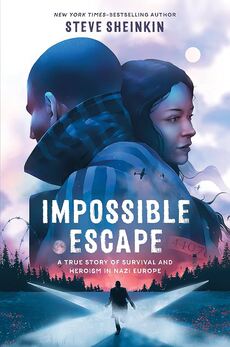 Recently, the Biography Clearinghouse interviewed author Steve Sheinkin about his latest nonfiction book, Impossible Escape: A True Story of Survival and Heroism in Nazi Europe. Action-packed and filled with dramatic tension and intricate historical details, Sheinkin shares the experiences of Rudi Vrba and Greta Sidonová, two Jewish teenagers during World War II. While the full video interview and transcript are available on our website, covering a range of questions regarding Sheinkin’s research and writing processes, we share an edited portion of it here on the CLA blog as an example of the complex decision-making that goes into writing narrative nonfiction for tween and teen readers. Interview Question As you were working on the book and revising it, how did you balance crafting a narrative that builds tension, which as you mentioned earlier, gets the reader hooked and builds the narrative towards that climactic moment, and the need for exposition, which is oftentimes in the case of this book exposition about very difficult topics? What were the moments where you knew that you had to interrupt the action, pause the action to provide that information for your readers? Steve Sheinkin’s Answer (edited for brevity): That’s doing narrative nonfiction for middle grade and YA, I think. That's my career essentially, trying to figure out how to do that…… I used to write textbooks. That's… you see how hesitant I was to confess that? But I used to write history textbooks where they don't have that problem. It's all just boring facts and figures and names and dates. And so I just don't want to ever do that. I'm still sorry and making amends for doing that. So I want it to be just story. And then I realize, wait a minute. I can’t be. I get jealous of people who write for adults because they could just say, “and then Pearl Harbor happened,” and then everyone knows what that means. I can't do that, and fair enough I shouldn't be able to, because it's unfair of me to assume that someone who's 12 or 14 has that background information, and they shouldn't have to, to pick up the book. I think that's part of what makes this, hopefully, makes one of my books valuable, is that they don't have to have background information…. I guess I hope it works that I start with just story…I am seeing all the best scenes where there's really well documented moments that have those elements of a scene that you want as a writer. .. You don't need to know them right away, but you do need to know them pretty early on, and that's why the first third of a book like this is always the hardest part. It’s kind of like a juggling act once the balls are going. It's okay. But getting them all in the air in the right order is the hard part. And so I'll write little bits of context. In this case the rise of Adolf Hitler, what the Nazis were doing. How anti-semitism was such, so central, to what the Nazis did, and and all of that… I end up writing way too much of that, and I always do, and then kind of pare it down until it starts to feel right, and I work with my editor on that kind of stuff more than any other part of the book. I don't like to write the whole thing and then send it to her. I specifically like to try to write that first third as a draft and send it to her because it's just never, never good at first. It always has that problem of being clunky, and either not starting fast enough or we're not getting to the context soon enough, and those are kind of at odds with each other. You can get it right with enough back and forth, and trial and error… It's kind of like making a movie. You film both. You film all the scenes. You don't have to decide right away what order you're gonna edit them together in, but you know they're all going to be there.
Punctuating Narrative with Exposition
Embracing Point of View in Nonfiction Writing
Mary Ann Cappiello teaches courses in children’s literature and literacy methods at Lesley University and is a founding member of The Biography Clearinghouse. She is co-chair of CLA's Expert Class committee and a former chair of NCTE’s Orbis Pictus Award for Outstanding Nonfiction K-8. Xenia Hadjioannou is associate professor of language and literacy education at the Berks campus of Penn State University. She is president of CLA and co-editor of the CLA Blog. She is a founding member of The Biography Clearinghouse. by Xenia Hadjioannou, Lauren Liang, Liz Thackeray Nelson (Editors of the CLA Blog) During the Closing Session of the 2021 NCTE Convention, María E. Fránquiz, Program Chair for the 2022 conference, announced the theme of the 2022 Annual NCTE Convention: ¡Sueños! Pursuing the Light. With this call for proposals, María is inviting us "to think of ways that we can pursue and bring light to each other, to our profession, and our organization." The full clip of her announcement is provided below. Clip from the Closing Session at NCTE 2021: María Fránquiz announcing the theme for NCTE 2022 Published with permission | Transcript Out of the Darkness Grows the Light In her announcement, María Fránquiz discussed drawing inspiration from the work of Sister Mary Corita Kent, "a social justice advocate, artist educator, designer and poet" and shared Kent's poem from the 1977 serigraph titled out of the darkness. María also referenced a recently published children's biography of Corita Kent written by Matthew Burgess and illustrated by Kara Kramer: Make Meatballs Sing: The Life and Art of Corita Kent. The biography, which was composed in close collaboration with the Corita Center and includes reproductions of her work, was recently selected as one of the 2022 Orbis Pictus recommended books.
Golden Line Strategy
Xenia Hadjioannou is Associate Professor of Language and Literacy Education at the Harrisburg Campus of Penn State. She is Vice President of CLA and co-editor of the CLA Blog. Lauren Aimonette Liang is Associate Professor at the Deparment of Educational Psychology of the University of Utah. She is Past President of CLA and co-editor of the CLA Blog. Liz Thackeray Nelson is a doctoral candidate at the University of Utah. She is co-chair of CLA's membership committee and co-editor of the CLA Blog. Conducting a Writing Cohort with the Support of the Bonnie Campbell Hill AwardBY KATIE SCHRODT
CLA Blog: Knowledge is Power: Mirrors, Windows, and Sliding Glass Doors BY MELISSA ANTINOFF 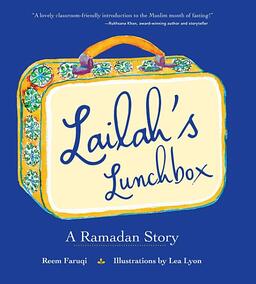 I was honored to be named one of the 2020 Bonnie Campbell Hill National Literacy Leader Award recipients. My project was to continue my equity work as a literacy leader. It is imperative that every classroom in every school district has books with BIPOC characters by BIPOC authors. Students need to see themselves in books (like a mirror) and see the rest of the world as well (like looking out a window). Books are the perfect gateway for this (like a sliding glass door that automatically opens and invites you in). While I have learned so much from the conferences I have attended so far this year, the most important piece of knowledge I’ve gained is that my equity work has spread from my school to my community. I now have language to teach my friends and family how to advocate for BIPOC and LGBTQ+ communities. Recently, the fervor over Dr. Seuss Enterprises no longer publishing 6 books with racist imagery was all over my social media feeds. I was shocked and disappointed by friends that thought the company was “going overboard.” One friend even said, “If you don’t like it, don’t buy it.” I replied with pictures of the offensive illustrations by Seuss, explaining why those 6 books were no longer going to be published. I used the analogy of windows. mirrors, and sliding glass doors to explain how none of those pictures have a place in our society. As librarian Leslie Edwards said, “A book published in 1937 with images that are considered racist by the group publishing the book...doesn't have a place in an elementary classroom or school library in 2021. Nostalgia isn't a reason for keeping a book. In schools and school libraries, the collection should reflect diverse viewpoints in an age- and developmentally appropriate manner. These diverse viewpoints should not demean or diminish others.” Some of my colleagues refuse to even touch the subject of racism and prejudice with their students, much less have diverse books in their classroom libraries. Last year, when I used our language arts budget for diverse books for each of my grade level’s classroom libraries, a colleague told me that the money was better spent on other materials. After attending my workshop on Culturally Responsive Teaching Through Diverse Literature, she changed her mind. She now could now understand the importance of a diverse library and how it will help her reach all of her students. I recently read aloud Lailah’s Luncbox, by Reem Faruqi. It’s a book about a girl fasting for Ramadan. I have a Muslim student in my third grade class that fasts. The other students now have an appreciation for her culture and she was so happy to share her knowledge with her classmates. Mirrors, windows, and sliding glass doors. With all of this professional and personal development, I now have the language and knowledge to change people’s minds. My students, colleagues, and community do, too. Katie Schrodt is a professor of literacy at Middle Tennessee State University where she works with pre-service and serving teachers. Katie’s research interests include reading and writing motivation with young children. She is one of the 2020 Bonnie Campbell Hill Award recipients. Melissa Antinoff is the 2019 Burlington County Teacher of the Year. She has been an elementary educator since 1992. Melissa specializes in developing a love of reading in her students. BY JENNIFER M. GRAFF & JOYCE BALCOS BUTLER, ON BEHALF OF THE BIOGRAPHY CLEARINGHOUSE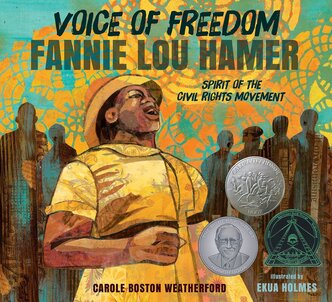 Our current celebration of poetry as a powerful cultural artifact and the national dialogue about voting rights generated by the introduction of 300+ legislative voting-restriction and 800+ voting-expansion bills in 47 states have inspired a rereading of the evocative, award-winning picturebook biography, Voice of Freedom: Fannie Lou Hamer, Spirit of the Civil Rights Movement. Written by Carole Boston Weatherford, illustrated by Ekua Holmes, and published by Candlewick Press in 2015, Voice of Freedom offers a vivid portrait of the life and legacy of civil rights activist, Fannie Lou Hamer. Her famous statement, “All my life I’ve been sick and tired. Now I’m sick and tired of being sick and tired” (p.18) serves as a testimonial to the psychological and physiological effects of the injustices and violence inflicted upon Hamer and other Black community members in Mississippi. Additionally, Hamer’s statement signifies her tenacity, conviction, and unwavering fight for voting rights, congressional representation, and other critical components of racial equality until her death in 1977.
Below we feature one of two time-gradated teaching recommendations included in the Create section of the Voice of Freedom book entry. Youth As Agents of Change in Local CommunitiesWeatherford begins Voice of Freedom with Hamer’s own words: “The truest thing that we have in this country at this time is little children . . . . If they think you’ve made a mistake, kids speak out.” Pairing Hamer’s advocacy detailed in Voice of Freedom with contemporary youth activists, guide students in their exploration of how they can (or continue to) be agents of change in their communities.
To see more classroom possibilities and helpful resources connected to Voice of Freedom: Fannie Lou Hamer, Spirit of the Civil Rights Movement, visit the Book Entry at The Biography Clearinghouse. Additionally, we’d love to hear how the interview and these ideas inspired you. Email us at [email protected] with your connections, creations, and questions. Jennifer M. Graff is an Associate Professor in the Department of Language and Literacy Education at the University of Georgia where her scholarship focuses on diverse children’s literature and early childhood literacy practices. She is a former committee member of NCTE’s Orbis Pictus Award for Outstanding Nonfiction K-8, and has served in multiple leadership roles throughout her 15+ year CLA membership. Joyce Balcos Butler is a fifth-grade teacher in Winder, Georgia, where she focuses on implementing social justice learning through content areas. She is a National Writing Project Teacher Consultant, a Red Clay Writing Fellow at the University of Georgia, and a member of CLA. BY JENNIFER SANDERS & COURTNEY SHIMEK, ON BEHALF OF THE BIOGRAPHY CLEARINGHOUSE 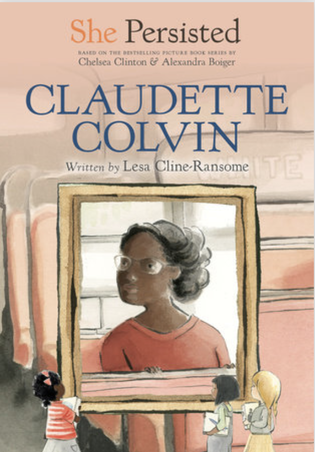 Many people have heard of Rosa Parks’ role in the Montgomery Bus Boycott, but few know that Claudette Colvin resisted bus segregation months before. Lesa Cline-Ransome’s new biography, She Persisted: Claudette Colvin, published by Penguin Random House, highlights 15 year-old Claudette’s role in the civil rights movement of the 1950s. Influenced by her teachers’ lessons on Black history, Claudette was armed with the courage of knowledge when she defied a bus driver’s order to move for a white passenger. When Claudette recalled that moment, she said, “Harriet Tubman’s hands were pushing down on one shoulder and Sojourner Truth’s hands were pushing down on the other shoulder… I couldn’t move” (Cline-Ransome, 2021, p.26). Claudette’s frustration about the injustices she witnessed in her life, including the loss of her younger sister to polio, spurred her actions that brought “the revolution to Montgomery” (2021, p.31). Cline-Ransome highlights these frustrations and mirrors Claudette’s curious, inquisitive nature by employing a question and answer secondary text structure throughout the biography. Cline-Ransome’s transitional chapter book about Claudette Colvin is currently featured on The Biography Clearinghouse . The crafted teaching guide includes information about three other women who resisted segregated bus policies before Rosa Parks and took the fight to federal court in the 1956 case Browder vs. Gayle. This book debunks historical myths and tells a fuller, more inclusive history of the individual and collective actions of people of color fighting oppression. Two of the plaintiffs in that court case were teenagers: Claudette Colvin was 15, and Mary Louise Smith was 18. In our interview, Lesa Cline-Ransome noted the connection between these young women’s activism and today’s young people serving as leaders of environmental and civil rights movements. This book can serve as a springboard for exploring present-day youth social activism with students. Operating within the Investigate, Explore, and Create Model of the Biography Clearinghouse, we designed teaching ideas to accompany She Persisted: Claudette Colvin.
Create |
If you have 1-2 hours... |
If you have 1-2 days... |
If you have 1-2 weeks... |
After reading She Persisted: Claudette Colvin, have students do a quick write about the Montgomery Bus Boycott. Ask them to generate questions they still have about the movement or these events in history. As a whole group, create an anchor chart of students’ questions. |
Jigsaw: Group 1: Put students into 4-6 groups (group A, B, C, etc.) and have them select one text from the set above. Give each group time to read their text, select important information, and look for answers to their personal questions (from the 1-2 hours activity). Group 2: Regroup the students with one person from each original group in each new group (i.e., one student from A, B, and C, etc.). Each student shares what they learned from the text they read with their first group. Have each group select one question they want to explore about the event and try to answer during this group share. Debrief with the whole class about what they learned. |
Using Cline-Ransome’s writing as a mentor, create a shared book that includes questions students asked and answers they found during the jigsaw. Students can title each chapter with the question, like Cline-Ransome did in She Persisted: Claudette Colvin, and have students answer that question in that section. “Publish” this book and display it for visitors to read and/or place in your classroom library. |
|
To see more classroom possibilities and helpful resources connected to She Persisted: Claudete Colvin, visit our Book Entry at The Biography Clearinghouse. Additionally, we’d love to hear how the interview and these ideas inspired you. Email us at [email protected] with your connections, creations, questions. Citation
Kristo, J. V., & Bamford, R. A. (2004). Nonfiction in focus: A comprehensive framework for helping students become independent readers and writers of nonfiction, K-6. Scholastic Professional Books.
|
Courtney Shimek is an Assistant Professor in the department of Curriculum & Instruction/Literacy Studies at West Virginia University. She has been a CLA member since 2015.
BY ERIKA THULIN DAWES & XENIA HADJIOANNOU, ON BEHALF OF THE BIOGRAPHY CLEARINGHOUSE
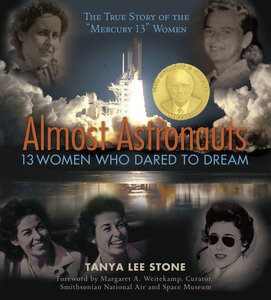
As we continue to work toward greater equality for women, here in the United States and globally, it is critical to share with young people the stories of women across history who have worked toward breaking boundaries for themselves and for other women. Tanya Lee Stone’s Almost Astronauts, 13 Women Who Dared to Dream is an important narrative in that history. Stone relates the story of women’s eventual entry to NASA’s space program by focusing on the stories of 13 women who dreamed of being astronauts and proved themselves through a private testing program in the early 1960s to be just as capable as their male counterparts.
Almost Astronauts is a history text that is highly biographical. It features life stories, but it is not a traditionally organized biography of a single individual or a collection of biographies. To shape the historical narrative, Stone employs several biographer techniques such as well researched and documented character sketches, biographical blurbs, and narrative episodes. The latter are of particular note, as Stone’s vivid descriptions place the reader in the moment with these women as they pursue their dreams. The book is replete with photographs, as well as reproductions and descriptions of primary source documents and artifacts that support and enhance the narrated events but also help establish their historical context.
With a compelling narrative, engaging life stories, and immersive description, Almost Astronauts is a versatile teaching tool for middle and high school classrooms. It fits well in units on space exploration, women’s history, boundary breaking, gender stereotyping, and narrative writing. In our entry on The Biography Clearinghouse, we use the Investigate, Explore, and Create Model to present ideas for using this book in the classroom as a read aloud, a text to use in literature circles, a mentor text, and a resource text.
|
Read Aloud:
We provide resources to carry out a multimedia-enhanced read aloud, during which you would share and discuss primary and secondary visual, audio, and video resources that enhance students’ understanding of context, character and theme. Literature Circles Title:
We suggest Almost Astronauts as one title in a text set of long-form picturebooks and chapter books focusing on the theme: “Women Breaking Boundaries for Self and Others.” Groups of students reading these titles would create response projects so that the class can compare the childhoods, accomplishments, and challenges of the women featured in the books. Mentor Text:
Stone’s engaging writing style makes Almost Astronauts an ideal mentor text for nonfiction narrative techniques, such as “explode the moment” for emphasizing key moments and turning points, (Harper, 1997) and ‘In Medias Res’ as a technique to immerse the reader in action. Resource Text: Taking a critical literacy stance, Almost Astronauts becomes a valuable resource in a study of persistent gender stereotypes and discriminatory practices. By providing details about popular culture and examples from media at the time, Stone offers young readers the opportunity to unpack and compare messaging about women and their expected behaviors and possibilities for achievement. These lenses can then be applied to contemporary popular culture texts and media so that students can discuss what has changed and what has not and consider action toward equity. |
CHECK OUT THE BOOK ENTRY |
Composing Multimodal Multigenre Biographies
In this recommendation, students have the opportunity to engage in their own biography research and experiment with biography composition through a multimodal, multigenre approach.
If you have 1-2 hours... |
If you have 1-2 days... |
If you have 1-2 weeks... |
Working in pairs or a small group, students select a contemporary or historical figure whose life fascinates them. Using a set of school-approved sources, have students compile a collection of links and other resources that represent the life story of their subject. Invite students to create a virtual biography exhibit through a gallery board platform (e.g. Padlet) for the figure they chose. The exhibit should be purposefully curated and annotated or captioned to tell the life story of their subject and emphasize the characteristics that intrigue them. |
Building on the collection of resources they have developed for the virtual biography exhibit, have students in their pairs or small groups create a Pecha Kucha style presentation. A Pecha Kucha presentation is a presentation featuring 20 images/slides appearing on the screen for 20 seconds each. Check out this video for a short tutorial. |
Have students use their virtual biography exhibit as the basis for producing a biographical documentary of their chosen subject that incorporates primary source documents, artifacts, photos, video, etc. and multiple pieces in different genres and modalities (written language, visual, audio, video). Depending on the technology affordances of your setting and your students’ experience with video editing, the biographical documentary can be created using such tools as iMovie, a PowerPoint presentation narrated and exported as a video file, or a recorded Zoom session using screen share. There also are several free video editing apps students can utilize. Teaching students how to cite their resources would be a vital component of this project. |
References
Harper, L. (1997). The writer’s toolbox: Five tools for active revision instruction. Language Arts, 74(3), 193–200.
Xenia Hadjioannou is an Associate Professor of Language and Literacy Education at the Harrisburg campus of Penn State University where she teaches and works with pre- and in-service teachers through various courses in language and literacy methodology. She is the co-director of the Capital Area Writing Project, the Vice President and Website Manager of the Children's Literature Assembly, and a co-editor of The CLA Blog.
By Kathryn Will, Meghan Goodwin, and Sophie Hendrix
1. Appealing format,
2. Enduring quality,
3. Exemplary quality for their genre, and
4. Meeting one or more of the following:
a. Use of language: play on words, word origins, history of language
b. Uniqueness in use of language or style
c. Invitation of child response or engagement
This post focuses on two of the texts from the 2020 Notables List that might be seen through the lens of a progression from small to large. Although The Magic of Letters (2019) and Small World (2019) are very different books, they can be used to invite readers to imagine, play, and wonder.
Written by Tony Johnston
Illustrated by Wendell Minor
Penguin Random House, unpaged, ISBN 978-0823441594
|
Imagine an invitation to play with language through the revelation of letters as building blocks to words, and words to meaning. Through rich images of simple, but colorful line drawings, and collage, readers are encouraged to consider the magical nature of literacy as the pathway to building new ideas. The interplay of the text and illustrations immerse the reader in the playful progress as the rabbit leads the journey from letters, to words, to sentences. Interesting and rigorous vocabulary such as flibbertigibbet, clunk, limber, and enchantment invite readers to strive for complex use of language.
|
Written by Ishta Mercurio
Illustrated by Jen Corace
Abrams Books for Young Readers, unpaged, ISBN 978-1419734076
|
From the beginning of her time on the Earth as a baby in her mother’s arms to her travels to the moon as an astronaut, we journey with Nanda in her ever-expanding world. As Nanda grows, her participatory experiences with her expanding world grow more scientifically complex. Beautiful vocabulary such as fractals, symphony, and spooled, complement the rich illustrations vividly layered with color and images. Lyrical language invites the reader to travel along the journey with comfort. Woven throughout the story as the perspectives change, a thread of circularity brings comfort within the expansive boundaries or growing up--first in her mother’s arms and finally in the sphere of the Earth as she looks at her home from afar. The illustrations of gouache, ink, and pencil provide the depth of realism with warm inviting scenes that allow the reader to imagine the existence of this journey. Ishta Mercurio offers craft ideas related to things Nanda does in Small World.
|
Teaching Tips
Both of these books invite readers to engage in exploration and discussion through multiple reads due to their rich vocabulary and use of language. Teachers can easily deepen and extend the texts through a variety of activities.
Using the illustrative style of The Magic of Letters, children could repurpose magazines and catalogues to cut out letters and words as sources for creating new words and sentences. As they pore over the texts, they could look for familiar and known letters and words, providing opportunities for practice in letter and word recognition before assembling them in a collage. Children could use crayon resist to create magic letters of their very own, or even play roll and write to create sentences from familiar and new words. These activities reflect the rich and playful nature of the text.
Small World is a text that envelopes the reader in the world of STEAM (Science, Technology, Engineering, Art, and Math). The rich vocabulary begs teachers to consider connections to geometry, snow science, and roller coasters. With consideration of Nanda’s career as an astronaut, students might watch this video about women astronauts, or think about materials they might need for a trip to the moon. This book also holds opportunities for rich discussion with questions such as:
- In what ways is the world large? In what ways is it small?
- What do the pictures in this book tell you? (without reading the book first to focus on inferencing)
- How has your perception of the world changed as you have grown up?
- In what ways did Nanda’s world change as she grew up? How does she see the world differently towards the end of the book as compared to the beginning?
- Why do you think Nanda’s perception of the world changed throughout the book? Can you relate to this?
Meghan Goodwin, Preservice teacher, University of Maine Farmington (@Ms_G_Teaches)
Sophie Hendrix, Preservice teacher, University of Maine Farmington
Living Literately and Mindfully at the Intersection of Mother Nature, the Animal World and Poetry
11/9/2020
BY PEGGY S. RICE
Consider...
|
Live in each season as it passes; breathe the air, drink the drink, taste the fruit, and resign yourself to the influences of each. Be blown on by all the winds. Open all your pores and bathe in all the tides of nature, in all her streams and oceans, at all seasons. Grow green with spring, yellow and ripe with autumn. For all Nature is doing her best each moment to make us well. She exists for no other end. Do not resist her. Henry David Thoreau, August 23, 1853 Poetry! There is no other genre like it in the world. A good poem can take you places you never thought possible, wake you up, shake you, make your every emotion quake with excitement and awe. Writing poetry is taking a subject---be it a pigeon or a Popsicle—breathing new life into it, letting readers know they never experienced a moment such as this before. Lee Bennett Hopkins, 2009. |
Make the Earth Your Companion --J. Patrick Lewis Make the Earth your companion. Walk lightly on it, as other creatures do. Let the Sky paint her beauty—she is always watching over you. Learn from the Sea how to face harsh forces. Let the River remind you that everything will pass. Let the Lake instruct you in stillness. Let the mountain teach you grandeur. Make the woodland your house of peace. Make the Rainforest your house of hope. Meet the Wetland on twilight ground. Save some small piece of Grassland for a red kite on a windy day. Watch the Icecaps glisten with crystal majesty. Hear the Desert whisper hush to eternity. Let the Town weave a small basket of togetherness. Make the Earth your companion. Walk lightly on it, as other creatures do |
- Writer’s Notebook: The notebook serves as a means to encourage young writers to value writing. It creates a space for students/writers to save words in the moment; "seeds" for a longer writing project which might be expanded and developed (Calkins, 1994).
- Banish Boring Words (Shelton, 2009): Use as a resource for interesting words. It provides lists of specific, interesting words for several categories of words, such as sight, sound, smell, taste, touch, action verbs, colors and shapes.
- The Book of Animal Poetry (Lewis, 2012), and the Book of Nature Poetry (Lewis, 2015) Mentor Poems: Before requiring students to write a poem at the intersection of Mother Nature, the animal world and poetry provide students with numerous opportunities to explore mentor poems. NTCE Award Winning Poet and former U.S. Children’s Poet Laureate, J. Patrick Lewis has created the Book of Animal Poetry (Lewis, 2012), and the Book of Nature Poetry (Lewis, 2015) to inspire us to see poetry in the natural world. Each collection includes 200 poems that “squeak, soar and roar” or “float, zoom and bloom.” Each poem is accompanied by a photograph to experience the wonder of Mother Nature and the Animal World.
Poetry Performance
| I recommend regular poetry breaks that provide students an opportunity to perform a poem of his/her choice. Repeated reading and poetry performance of a favorite poem can enhance students’ motivation and build/increase fluency skills as well as strengthen reading/writing connections. Renee M. LaTulippe at No River.com provides 5 tips for poetry performance that my students and I have found helpful. Within the context of repeated readings and poetry performance, discussions about poet’s craft/poetic elements can occur, such as stanzas, use of white space, figurative language (similes, metaphors & imagery), personification, rhyme, rhythm, alliteration, onomatopoeia, assonance, consonance and repetition. Performance of an original poem can provide a moment of pride and peer review of videotaped performances can strengthen literacy skills. | |
Power of Place
|
|
Poetry Writing
Savor...
--Anonymous (Navajo Indian)
In beauty may I walk
All day long may I walk
Through the returning seasons may I walk
Beautifully will I possess again
Beautifully birds
Beautifully joyful birds
On the trail marked with pollen may I walk
With grasshoppers about my feet may I walk
With dew about my feet may I walk
With beauty may I walk
With beauty before me may I walk
With beauty behind me may I walk
With beauty above me may I walk
With beauty all around me may I walk
In old age, wandering on a trail of beauty, lively, may I walk.
In old age, wondering on a trail of beauty, living again, may I walk
It is finished in beauty
It is finished in beauty
References
Fletcher, R. (2002). Poetry matters: Writing a poem from the inside out. New York: Harper Trophy.
Lewis, J. P. (2015). National geographic book of nature poetry: More than 200 poems with photographs that float, zoom, and bloom! Washington, DC: National Geographic Partners, LLC.
Lewis, J. P. (2012). National geographic book of animal poetry: More than 200 poems with photographs that squeak, soar, and roar! Washington, DC: National Geographic Partners, LLC.
Shelton, L. (2009). Banish boring words. New York: Scholastic
By Jennifer Graff and Courtney Shimek on behalf of the Biography Clearinghouse
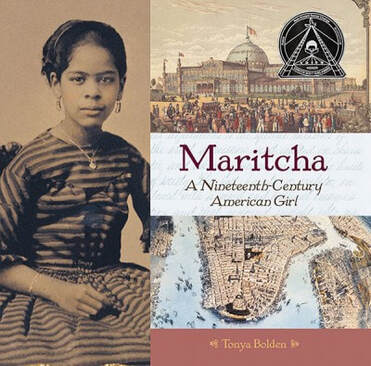
Bolden felt compelled to write about Maritcha after coming across her memoir at the Schomburg Center for Research in Black Culture. Bolden’s rich, descriptive language and use of primary and secondary sources illuminate the life and experiences of Maritcha Rémond Lyons and her family in New York City during the latter half of the 19th century. Readers discover what life for Blacks was like in New York City, witness the terror and violence of the Draft Riots in 1863, and experience the fight for education and equal treatment. Bolden’s discussion of her research and writing process in the front and back matter as well as Maritcha’s perseverance, determination, and legacy inspired us to interview Bolden and imagine how we could incorporate this powerful biography into our classrooms.
|
Investigate focuses on authors’ and illustrators’ craft and structure. Suggested mini-lessons, writing opportunities, and talking points invite students to take composition-focused “closer looks” and “tryouts,” accentuating the importance of authors’ and illustrators’ craft from multiple perspectives. Bolden’s use of rich, vivid language and a medley of source material in Maritcha inspired our suggestions that connect the power of word choice and text structure as well as differentiate between facts and informed hypotheses.
Explore offers resources to connect ideas, historical events, and scientific discoveries and inventions within the featured biographies to our world. These resources are selected to help readers deepen and extend their understandings of and connections between historical events and eras, scientific progress and modern conveniences, and to illustrate the interconnectedness of life across geographical places/spaces and disciplinary perspectives. For Maritcha, we found resources about the Draft Riots of 1863 as well as other education desegregation cases from the United States that happened between a decade and a century prior to Brown v. the Board of Education. Create invites readers to apply what they learn and know from the biographies to their current communities and contexts. Acutely aware of time and resources, our suggestions are typically designed to meet educators where they are and offer additional opportunities. |
Create with Maritcha
Featured here is one of the Create ideas inspired by Maritcha. We mirror Bolden’s focus on family, community, and equity by having students think about their individual families, situate themselves within their communities, and then engage in positive action and change. While Bolden’s Maritcha is geared toward upper elementary or intermediate grades, the Create ideas speak to primary and intermediate grade levels, work with varying amounts of time, and stimulate new ideas rather than prescribe curricular engagements.
|
Getting to Know Your Community Leaders
If you have 1-2 hours . . . |
If you have 1-2 days . . . |
If you have 1 week or longer . . . |
Discuss the ways in which Maritcha’s community helped her succeed and who the leaders were in her community. |
As a class or in small groups, brainstorm who (people and/or organizations) are part of their communities, who they consider to be leaders in their communities, and why (e.g., leadership qualities, character traits, etc.). Sample discussion starters:
|
In small groups, students identify someone from their community network. Students generate interview questions and then conduct in-person or virtual interviews with their identified community members about the importance of community, leadership, etc. (connect back to key ideas from Maritcha). |
Courtney Shimek is an assistant professor at West Virginia University and has been a member of CLA since 2015.
Authors:
CLA Members
Supporting PreK-12 and university teachers as they share children’s literature with their students in all classroom contexts.
The opinions and ideas posted in the individual entries are those of the individual authors and do not necessarily reflect the opinions or views of CLA or the Blog Editors.
Blog Editors
contribute to the blog
If you are a current CLA member and you would like to contribute a post to the CLA Blog, please read the Instructions to Authors and email co-editor Liz Thackeray Nelson with your idea.
Archives
May 2024
April 2024
March 2024
February 2024
January 2024
December 2023
November 2023
October 2023
September 2023
August 2023
May 2023
April 2023
March 2023
December 2022
November 2022
October 2022
September 2022
August 2022
June 2022
May 2022
April 2022
March 2022
February 2022
January 2022
December 2021
November 2021
October 2021
September 2021
August 2021
June 2021
May 2021
April 2021
March 2021
February 2021
January 2021
December 2020
November 2020
October 2020
September 2020
August 2020
June 2020
May 2020
April 2020
March 2020
Categories
All
Activism
Advocacy
African American Literature
Agency
All Grades
American Indian
Antiracism
Art
Asian American
Authors
Award Books
Awards
Back To School
Barbara Kiefer
Biography
Black Culture
Black Freedom Movement
Bonnie Campbell Hill Award
Book Bans
Book Challenges
Book Discussion Guides
Censorship
Chapter Books
Children's Literature
Civil Rights Movement
CLA Auction
CLA Breakfast
CLA Expert Class
Classroom Ideas
Collaboration
Comprehension Strategies
Contemporary Realistic Fiction
COVID
Creativity
Creativity Sponsors
Critical Literacy
Crossover Literature
Cultural Relevance
Culture
Current Events
Digital Literacy
Disciplinary Literacy
Distance Learning
Diverse Books
Diversity
Early Chapter Books
Emergent Bilinguals
Endowment
Family Literacy
First Week Books
First Week Of School
Garden
Global Children’s And Adolescent Literature
Global Children’s And Adolescent Literature
Global Literature
Graduate
Graduate School
Graphic Novel
High School
Historical Fiction
Holocaust
Identity
Illustrators
Indigenous
Indigenous Stories
Innovators
Intercultural Understanding
Intermediate Grades
International Children's Literature
Journal Of Children's Literature
Language Arts
Language Learners
LCBTQ+ Books
Librarians
Literacy Leadership
#MeToo Movement
Middle Grade Literature
Middle Grades
Middle School
Mindfulness
Multiliteracies
Museum
Native Americans
Nature
NCBLA List
NCTE
NCTE 2023
Neurodiversity
Nonfiction Books
Notables
Nurturing Lifelong Readers
Outside
#OwnVoices
Picturebooks
Picture Books
Poetic Picturebooks
Poetry
Preschool
Primary Grades
Primary Sources
Professional Resources
Reading Engagement
Research
Science
Science Fiction
Self-selected Texts
Small Publishers And Imprints
Social Justice
Social Media
Social Studies
Sports Books
STEAM
STEM
Storytelling
Summer Camps
Summer Programs
Teacher
Teaching Reading
Teaching Resources
Teaching Writing
Text Sets
The Arts
Tradition
Translanguaging
Trauma
Tribute
Ukraine
Undergraduate
Using Technology
Verse Novels
Virtual Library
Vivian Yenika-Agbaw Student Conference Grant
Vocabulary
War
#WeNeedDiverseBooks
YA Lit
Young Adult Literature

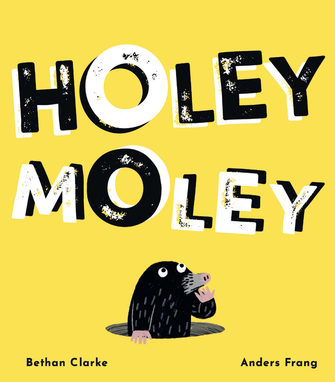
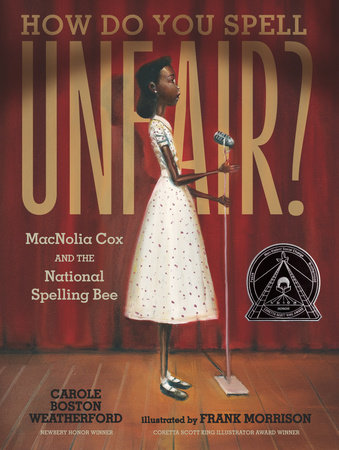
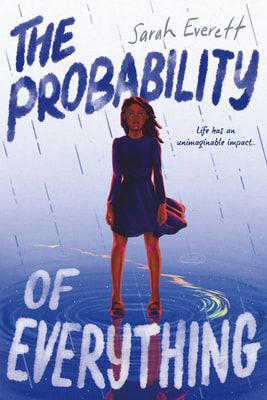
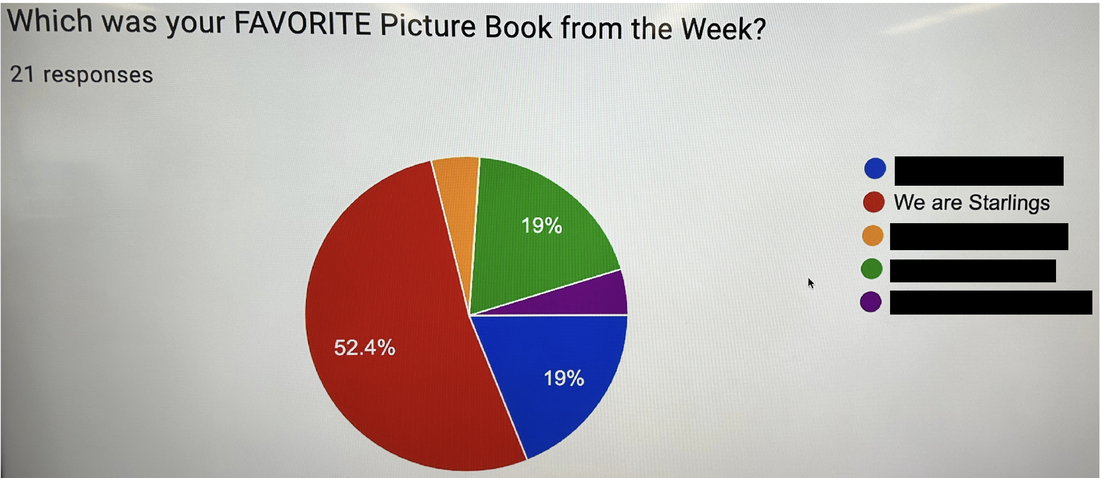
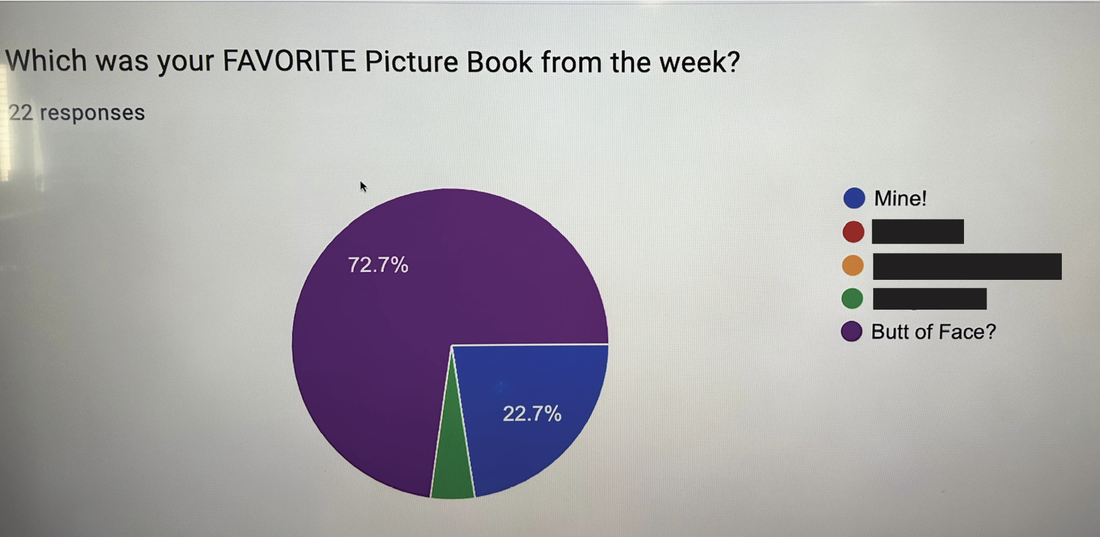
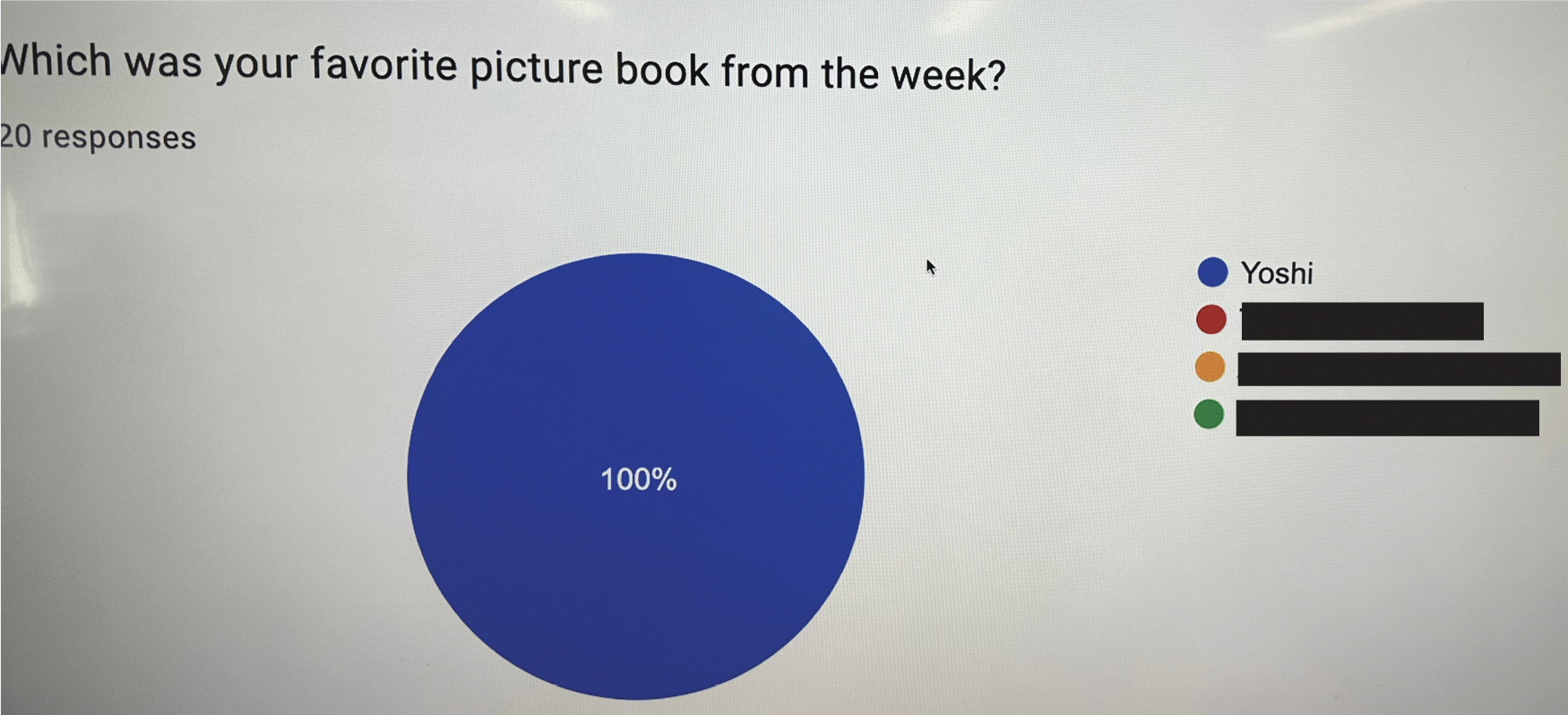
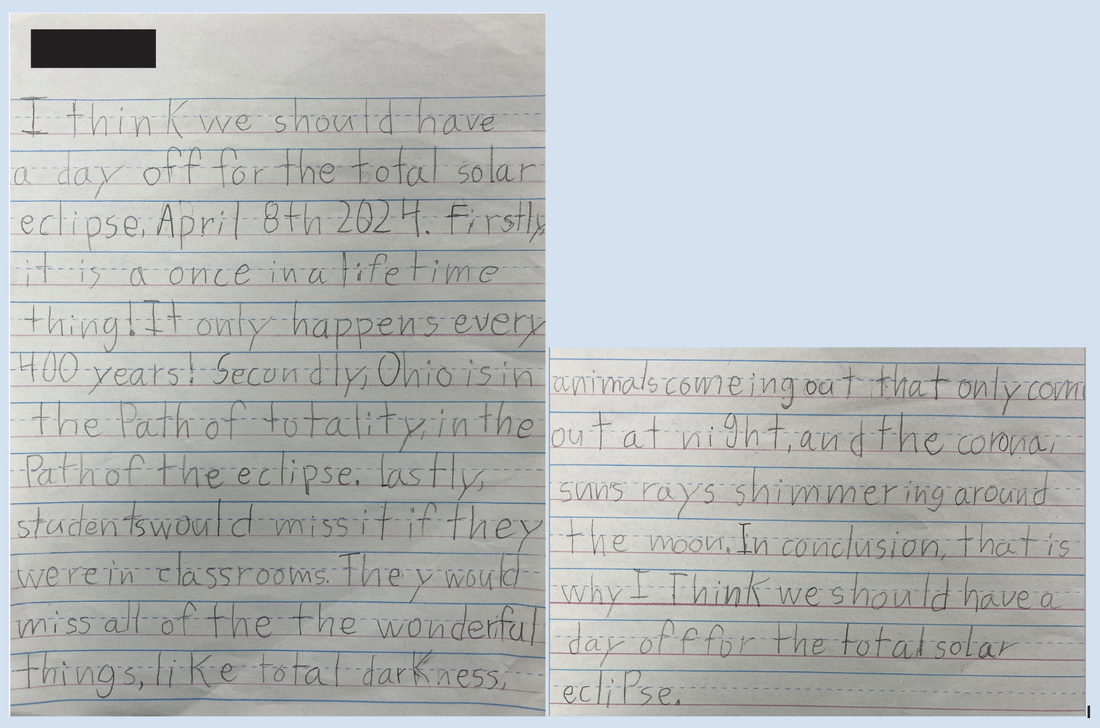
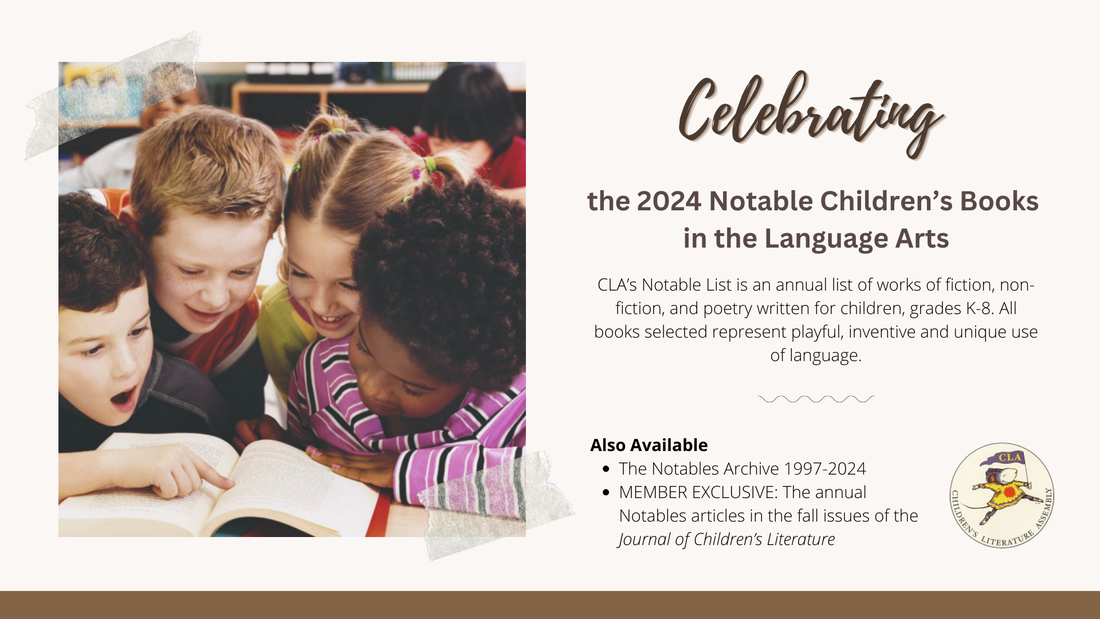

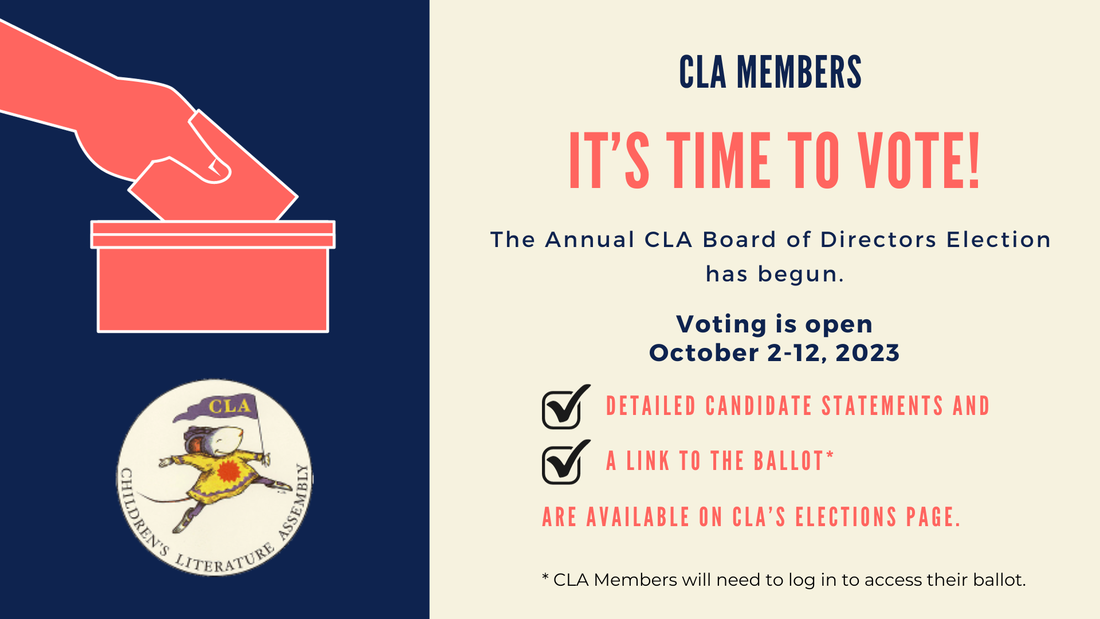

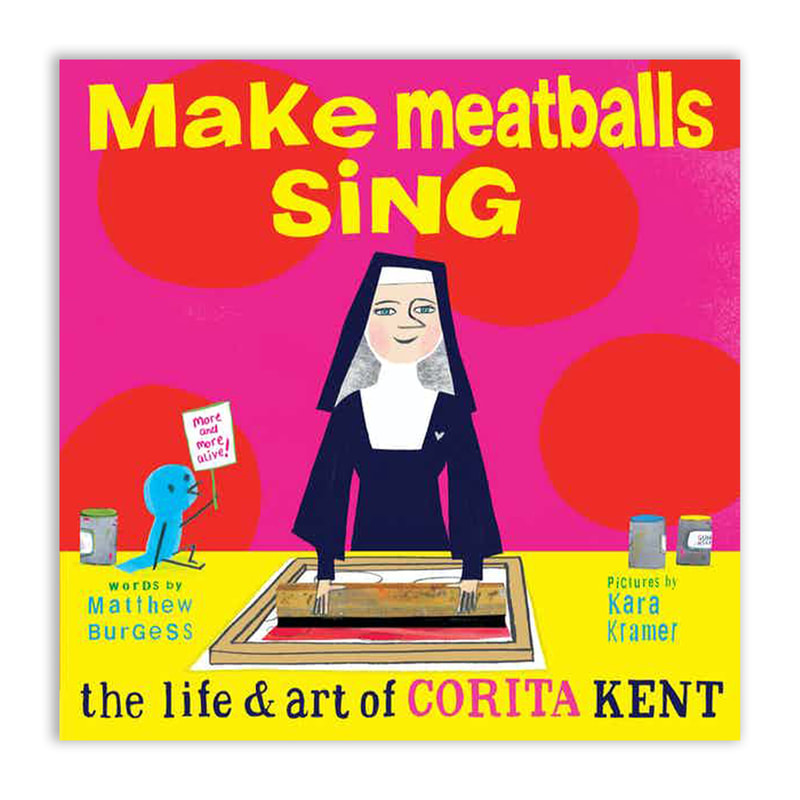
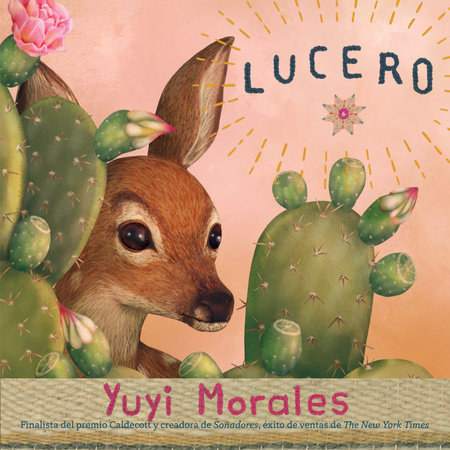
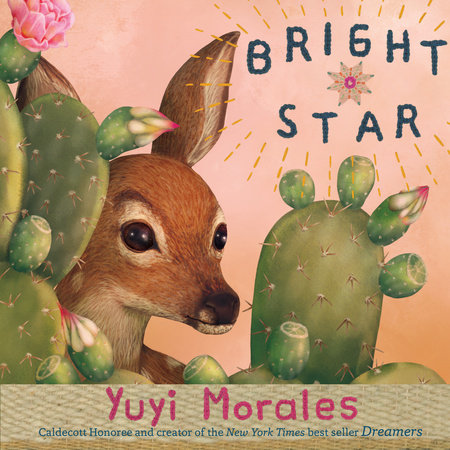
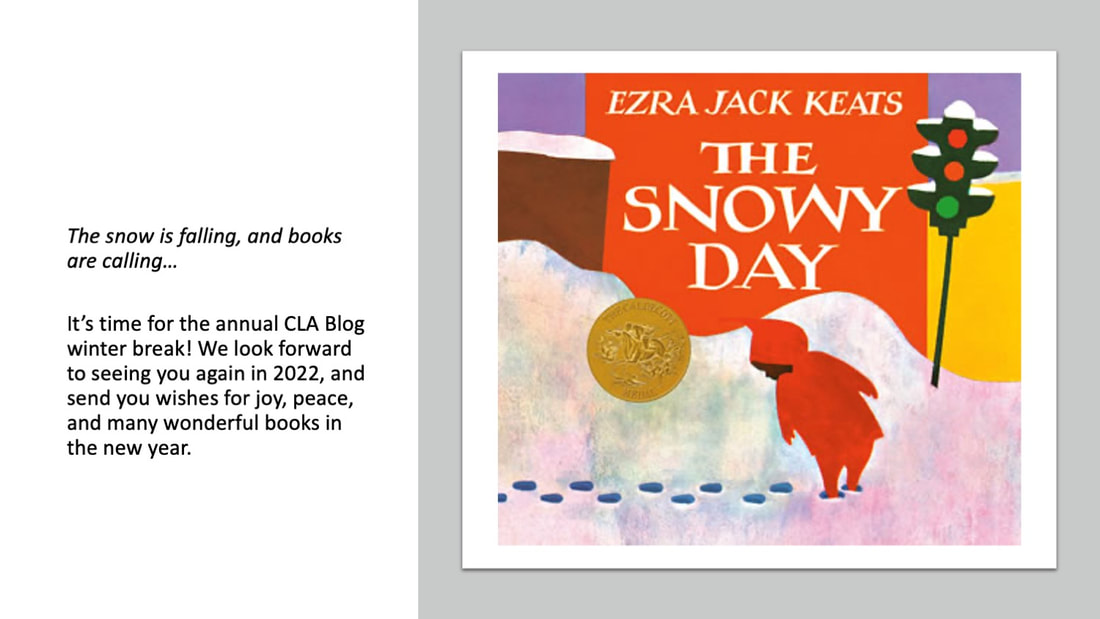
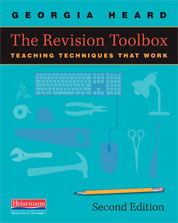
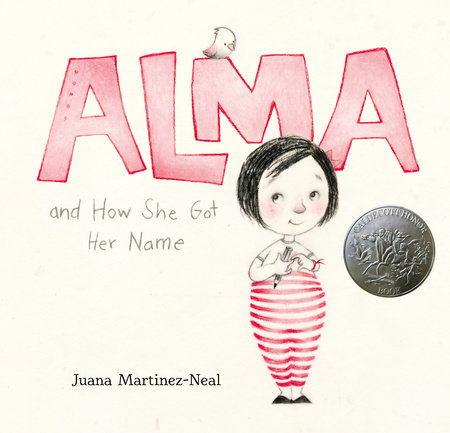
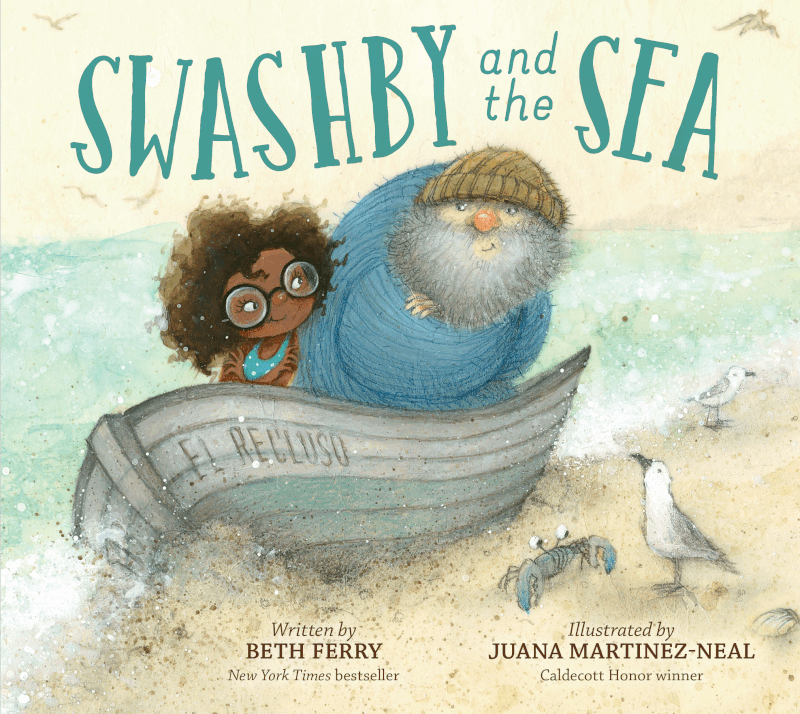
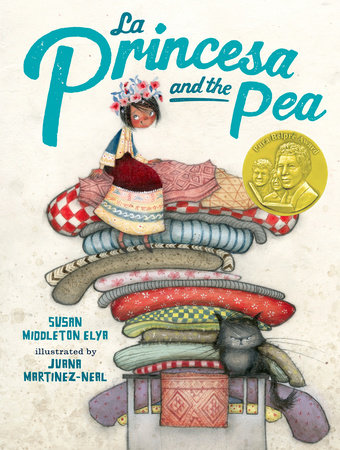
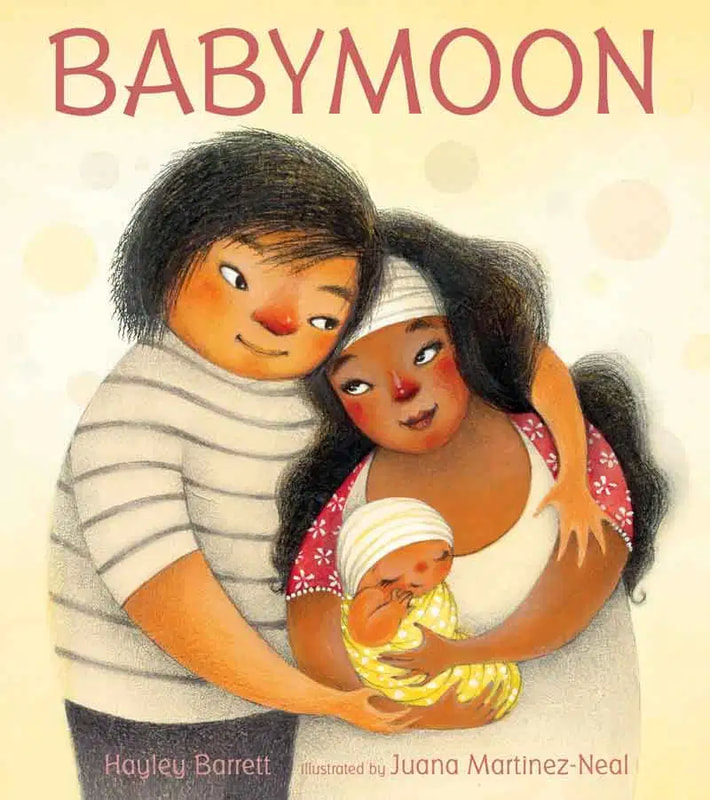
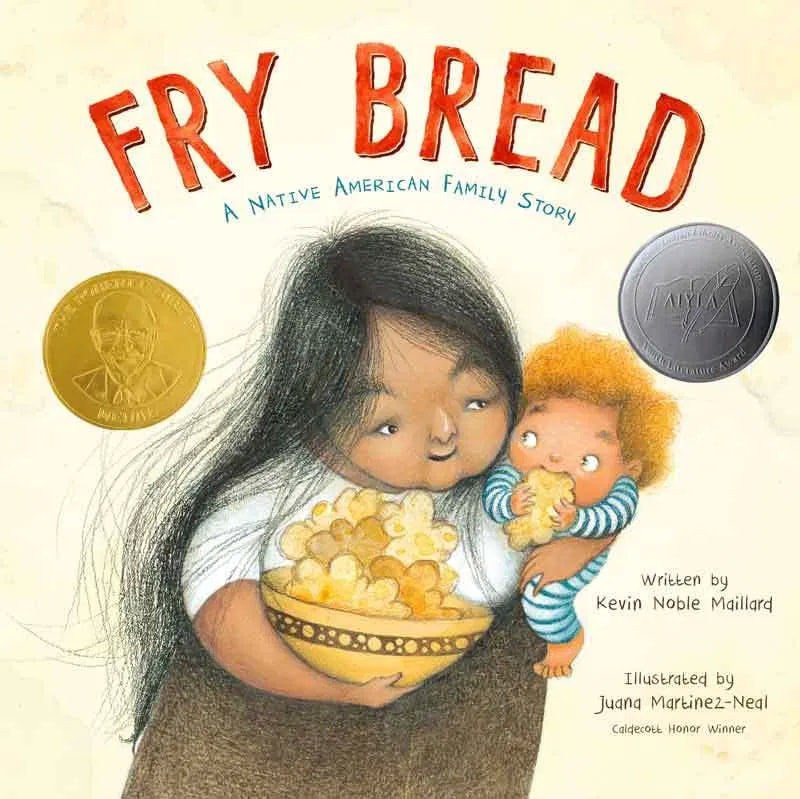
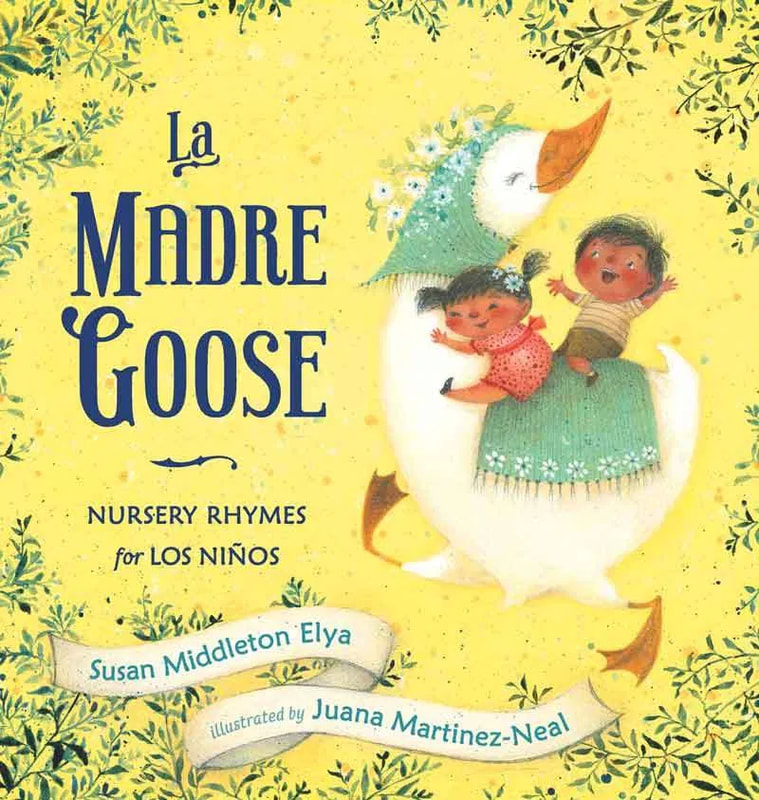
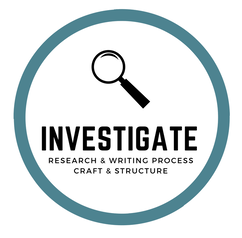
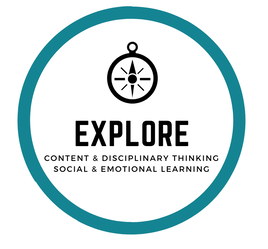
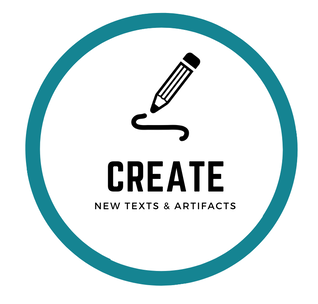

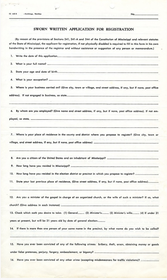
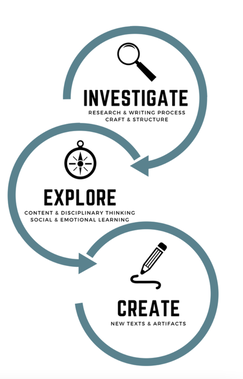

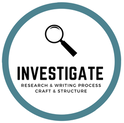
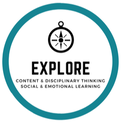

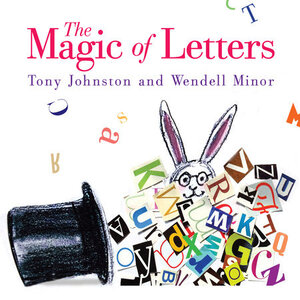
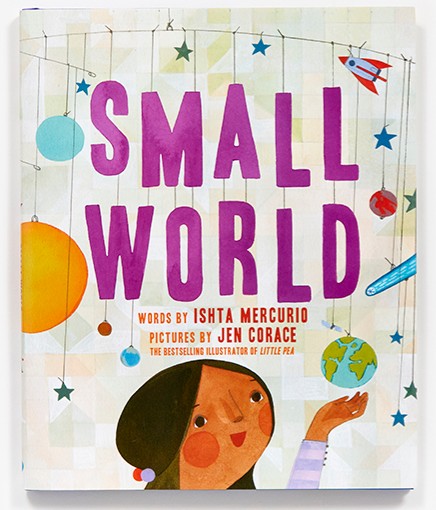
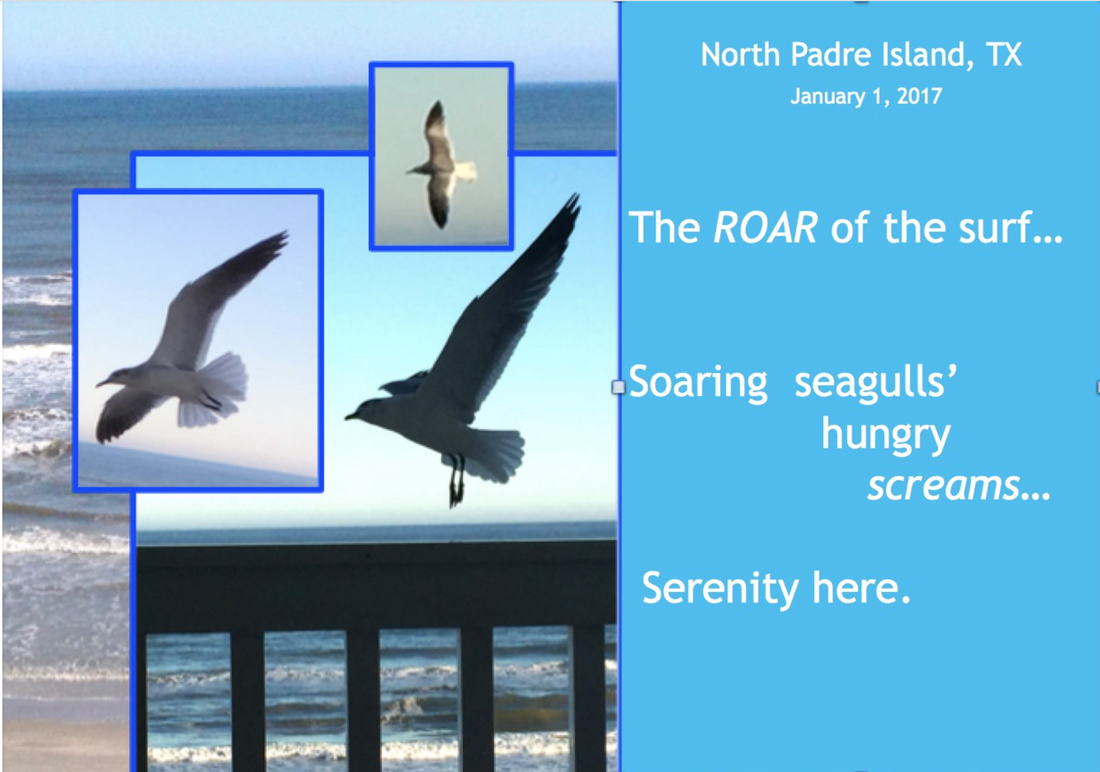
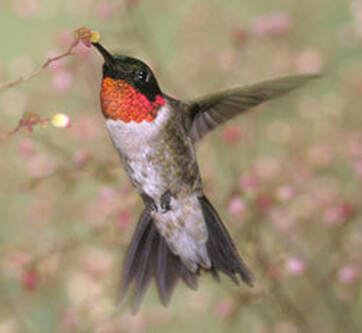
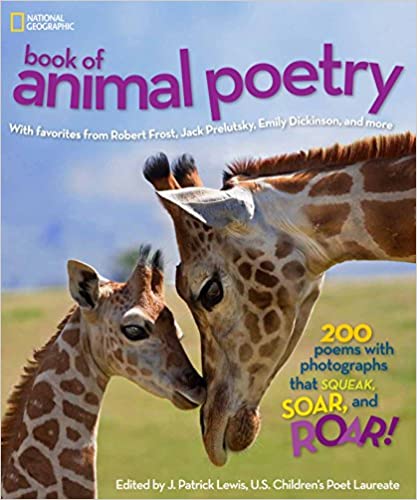
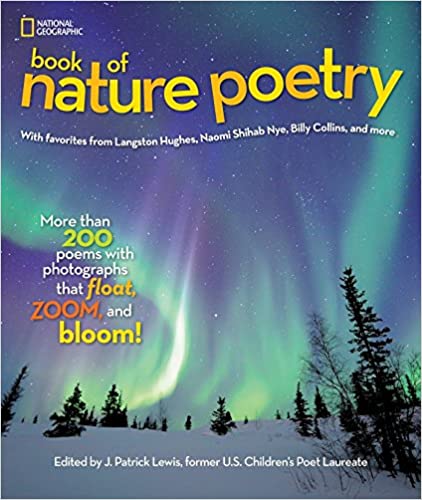
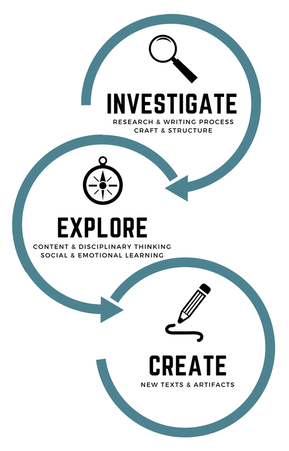
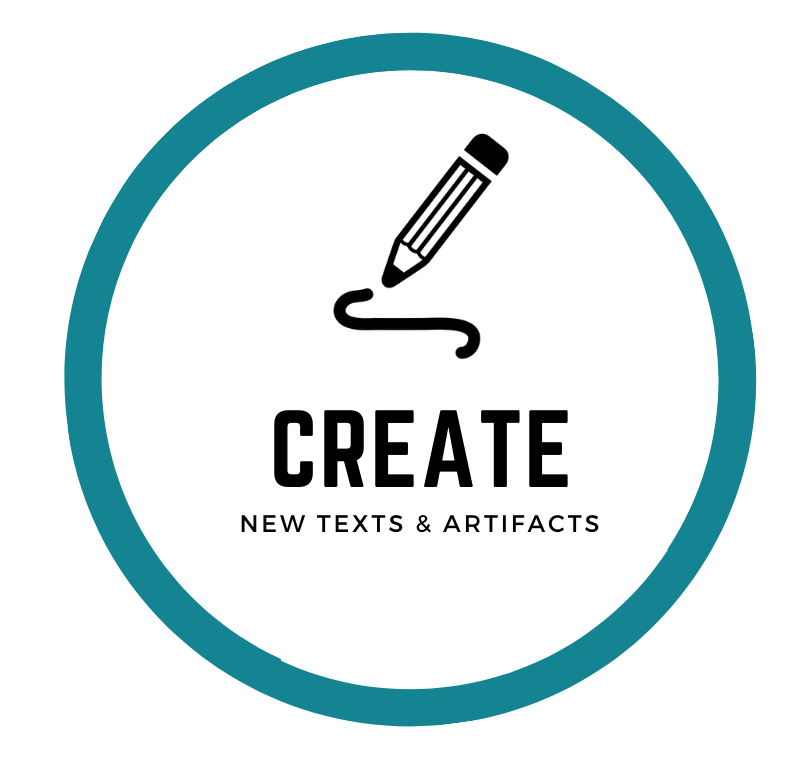
 RSS Feed
RSS Feed